I have been on the search for a math curriculum that Tabitha can use to advance her knowledge of math. At the beginning of this school year, I wasn't quite sure what I was going to use. I was hearing several different curriculum names being thrown around along with different styles and approaches, such as spiral and mastery. As a new homeschooling mom, it was quite overwhelming. I knew I needed something for Tabitha to do for math because her math knowledge was a bit advanced to just use the math that came with the My Father's World Kindergarten we are using. I was thrilled when I was given the opportunity to review the 1st Grade Light Blue Curriculum from Math Mammoth with the Schoolhouse Review Crew.
To tell you the truth, I had never heard of Math Mammoth, but now that I have been using it and have researched it, I think we may have found the curriculum I want to stick with. The author of Math Mammoth, Maria Miller, is a math teacher turned homeschooling mom. She created this curriculum specifically with homeschoolers in mind because she was concerned with the inferiority of math materials that she saw other homeschoolers using. She wanted to help ease the struggles of homeschool moms who were trying to teach math.
Let me share with you what she stated as her goal, "The aim of my books is first and foremost to explain math in very simple terms, yet rigorously, concentrating on understanding of concepts." In order to do this she uses "picture exercises a lot because they are sort of equivalent to playing with manipulatives and help children understand how math works. After those, come more abstract exercises. "
She has created these books so you do not need an additional teacher manual because the information needed for teaching the lesson is right there on the student worktext pages. I love the image that came to mind when I read the following on the About Math Mammoth page:
"I imagine teaching a concept on blackboard and try to put that to the pages of the book. So in essence it's me teaching through the book. "
The idea of having a math teacher in our house, teaching the concepts that might be too difficult for me to explain clearly, was quite exciting. I have always loved math and I want my children to have a good understanding so they can also develop a love of this critical subject.
Math Mammoth is available in a few different formats: Downloads, CDs or Printed Copies. As a member of the Schoolhouse Review Crew I was able to receive the Download version of the 1st Grade Light Blue Curriculum which includes:
- Levels 1A and 1B Worktexts (which is like a workbook and textbook rolled into one)
- Levels 1A and 1B Answer Keys
- Chapter Tests plus End of Year Test along with the answer keys
- Cumulative Review Worksheets
- Worksheet Generator
- Alternative worktext pages for Chapter 8 (money) for 5 different countries
- Soft-Pak Math Software
The curriculum download arrived as a zip file and I had no problems downloading or extracting the files. I was able to print off the pages of the Worktext that I needed right away and get started. I printed the "zero" chapter, which is actually a Kindergarten review and several pages of the first chapter which is titled "Addition Within 0-10." I love that I can print just a few sheets at a time and store them in a folder (which was really helpful as our printer was acting up). I also printed out the Chapter 1 Introduction, which includes information needed by the parent, a breakdown of the lessons, ideas for games using addition and subtraction facts and internet resources.
I knew that Tabitha already knew all of the information in the Kindergarten review, so I gave it to Amelia to work on. She was able to work on Equal Amounts, Same and Different, Writing Numbers, Counting, Position Words, Colors, Shapes and Patterns. She really enjoyed having some worksheets to use.
The first chapter of the 1A Worktext starts out with teaching the child how to make two groups that add up to a total. This was very basic for Tabitha, who already has a knowledge of some simple addition. However, I had her work on these pages because I want to make sure she has a true understanding of how addition works. As this was simple for her I didn't have her work on all the pages. As I mentioned, I love that I can only print out what I need. After learning to make groups we moved on to adding using the expression, "____ and ____ make ____," before introducing the words "plus" and "equals." She was also shown that it doesn't matter which way you add 2 numbers, the answer will be the same. Some other concepts we worked on are: Greater than or Less than, figuring out the missing number in the addition sentence ("what number plus _____ equals ______."), number lines and adding 3 numbers.
I really appreciate the way the curriculum goes systematically through the numbers up to 10 to learn the addition facts for each number. The student is able to see all the different combinations that will add up to 5, 6, 7, 8, 9 and 10. The author calls this "Structured Drilling." Here is her definition, "Structured drilling, is not
a random drill, because you will start by showing the pattern or the structure in the facts. This will
help the student to tie the addition facts in with a context and help him/her understand the facts on a
conceptual level, instead of merely memorizing them at random. The number combinations that add
up to a certain number is the basis for the drills."
Here is the introduction to the addition sentences for the sum of 5:
As we worked through the chapter there were plenty of opportunities to review the previous numbers' facts. Sometimes I had Tabitha fill in the answers, other times I just had her answer me verbally.
The author also stresses the importance of using math facts in games and everyday life. So...I pulled out some math manipulatives that I found at the thrift shop. The foam circles you see below were double sided, yellow and red. I gave Tabitha 5 of them and had her flip different amounts over so she could work on adding up to 5.
Tabitha also seemed to enjoy one of the game suggestions in the Introduction called "Some Went Hiding." You gather together objects in the amount of the number you are working on, I opted to use pompoms. Then I hid some of the pompoms in my hand and she had to figure out how many are hiding."
She was able to give me the right answer every time. Then I let her have a turn hiding them.
Once we are done with Chapter 1 we will get to work on Subtraction Within 0-10 (ch. 2) and then Place Value Within 0-100 (ch. 3) in Worktext 1A.
Worktext 1B contains the following chapters:
- Addition and Subtraction Facts
- Clock
- Shapes and Measuring
- Adding and Subtracting Within 0-100
- Coins
We have been going through the worksheet pages a little slower than recommended. This actually surprised me, as I know Tabitha is quite capable of doing this work and she has loved working in workbooks before. I don't know if she would prefer the worksheets in the printed workbook format or she just feels it is too much, but I didn't want to push her too much especially because she is technically only Kindergarten age.
Math Mammoth has the Light Blue Complete Curriculum for Grades 1-6. (The full set, like I received, can be purchased for $34 for the download, $39 for the CD and $65.80 for the full set of printed materials (though they are actually sold separately). Some of the other grades' prices for the printed materials vary slightly.)
In addition, Math Mammoth also offers the Blue Series. (Prices range from $2-$7) "Each of the Blue Series units concentrates on a few topics only, such as addition & subtraction, place value, clock, measuring, money, multiplication, division, geometry, fractions, decimals, ratios, percent, integers, and so on. This topical arrangement makes the books suitable for many kinds of situations, such as:
- To supplement any other math curriculum;
- As a remedial material for students who are behind;
- As a review material on specific topics."
Also available are the Golden Series, Green Series and Make it Real Learning Series. You can check these all out on the Math Mammoth website.
You can click here to read more reviews of all of these Math Mammoth Series by the Schoolhouse Review Crew.
















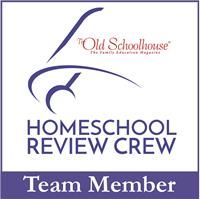














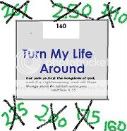
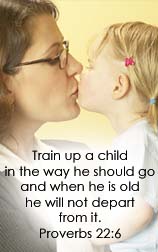



![[PREMIO2009.png]](https://blogger.googleusercontent.com/img/b/R29vZ2xl/AVvXsEjXD_Gx-wZ9EM5hXKrEYLksEBkYfRQtmb8VDVTDG_yyLggQoFIstZsh4zszdG20KqErZicRzEhiNYLty7j3IMXJYsABqkXjr8pp-ncj71xCbpxlXGbGpZq2fTuDQqq1RMKV4DPcDBnBViA/s1600/PREMIO2009.png)
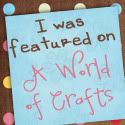
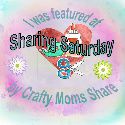


Beautiful review! We loved Math Mammoth as well. I am excited to get some of the beginning levels for my soon to be K student.
ReplyDelete